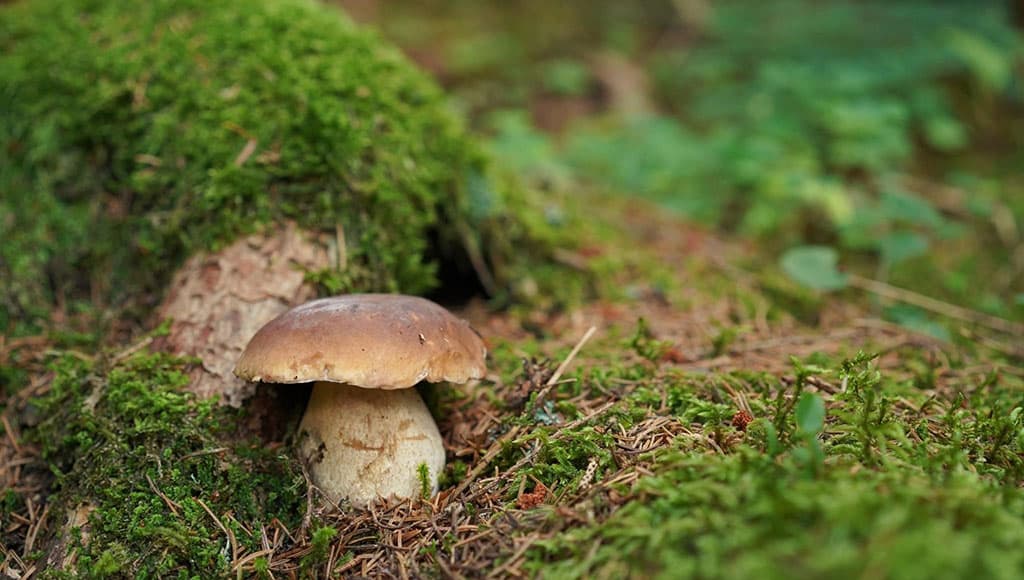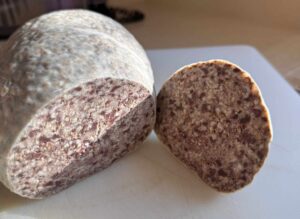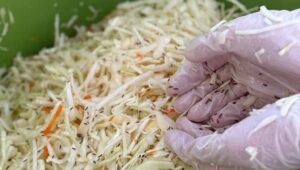“Look carefully!” – my grandfather said.
“Look where you step” – he said – “and it will reveal itself!”
Having received these words of wisdom, as a kid I would run headlong with hopes to spot an amazing forest dweller, known to the Russian speaking parts of Eastern Europe as Beliy Grib, the White Mushroom.
The name reflects the fact that, unlike his fellow mushrooms, it remains white and does not change colour when cooked. Known as Porcino in Italy, Penny Bun in England, Steinpilz in Germany, Panza in Mexico, and Cèpe de Bordeaux in France, it is classified as Boletus edulis by mycologists.
Running ahead was my strategy to outmanoeuvre my grandfather, but the treacherous Boletus would only reveal itself to the well-trained eye. Its terracotta-red caps skilfully disguise themselves underneath the similarly coloured dried grass, leaves or twigs. In addition, Boletus also requires the forager to know its habitat. Similar to truffles, chanterelles and morels, it is a mycorrhizal mushroom, meaning that it is a product of the symbiosis with a particular forest ecosystem.
Most commonly, it frequents the woods filled with pine, fir, hemlock, chestnut, oak, or spruce trees, where it uses sugars from the tree roots, while the roots absorb water and nutrients from the mushroom. Once this relationship is established, it will sprout every year. It also suggests that Boletus can’t be grown in “captivity”; it is born to be wild.
Furthermore, the consideration of weather conditions must also be made when setting out on a trip. Boletus mushrooms prefer a climate where long, warm summer days are interspersed with quick and generous showers. A combination of warmth and humidity are the ideal growing conditions.

Frost is known to be a forager’s nightmare. It inhibits growth and puts an end to the picking season that can last from as early as May and until the end of September. As a seasoned forager, my grandfather was attuned to these rhythms and knew exactly the right time to head out.
The seasonality of this delicacy pressures Boletus enthusiasts to obtain and enjoy the mushroom when it’s at its best, i.e., fresh. My favourite way to celebrate the Boletus season is to pan-fry it in butter, garlic and thyme, and serve on toast; a simple and honest way to give centre stage to its sweet and earthy flavours. It also works well as part of a prosciutto and spinach or prosciutto and sage stuffing or on top of a salad, generously dressed with Parmesan cheese and a squeeze of lemon.
Most commonly, Boletus is available in a dried form which, to our delight, extends the season. Dried mushrooms are more intense in flavour and require to be rehydrated with a dash of water for 20-30 minutes. Try them in combination with cream in a risotto or pasta dish, or add them to a pearl barley soup, a classical way to eat it in Eastern Europe.
Often, I would use the dried Boletus in combination with other mushrooms to amplify their rich and earthy flavours and to keep the chewy texture. It works a treat in a mushroom duxelles that can be further used in beef Wellington or as a vol-au-vent stuffing.
At times, the outing with my grandfather would uncover a forest clearing full of mushrooms. Undeservedly, he would give me all the finder’s credit. Filled with excitement, we would proceed without haste turning our hats and scarves into makeshift baskets to carry the trove of treasure. Beaming with glee, we would bring the spoils home, where my grandmother would treat us to the forager’s dinner, and would be busy pickling the rest for the winter until the wee little hours of the morning.
By Dr. Irina Mikhailava
|| features@algarveresident.com
Dr. Irina Mikhailava, a chef and a good food champion, happily residing in the Algarve and eating all over the world with an appetite for learning, sharing and writing. Instagram: incompanyoffood


























